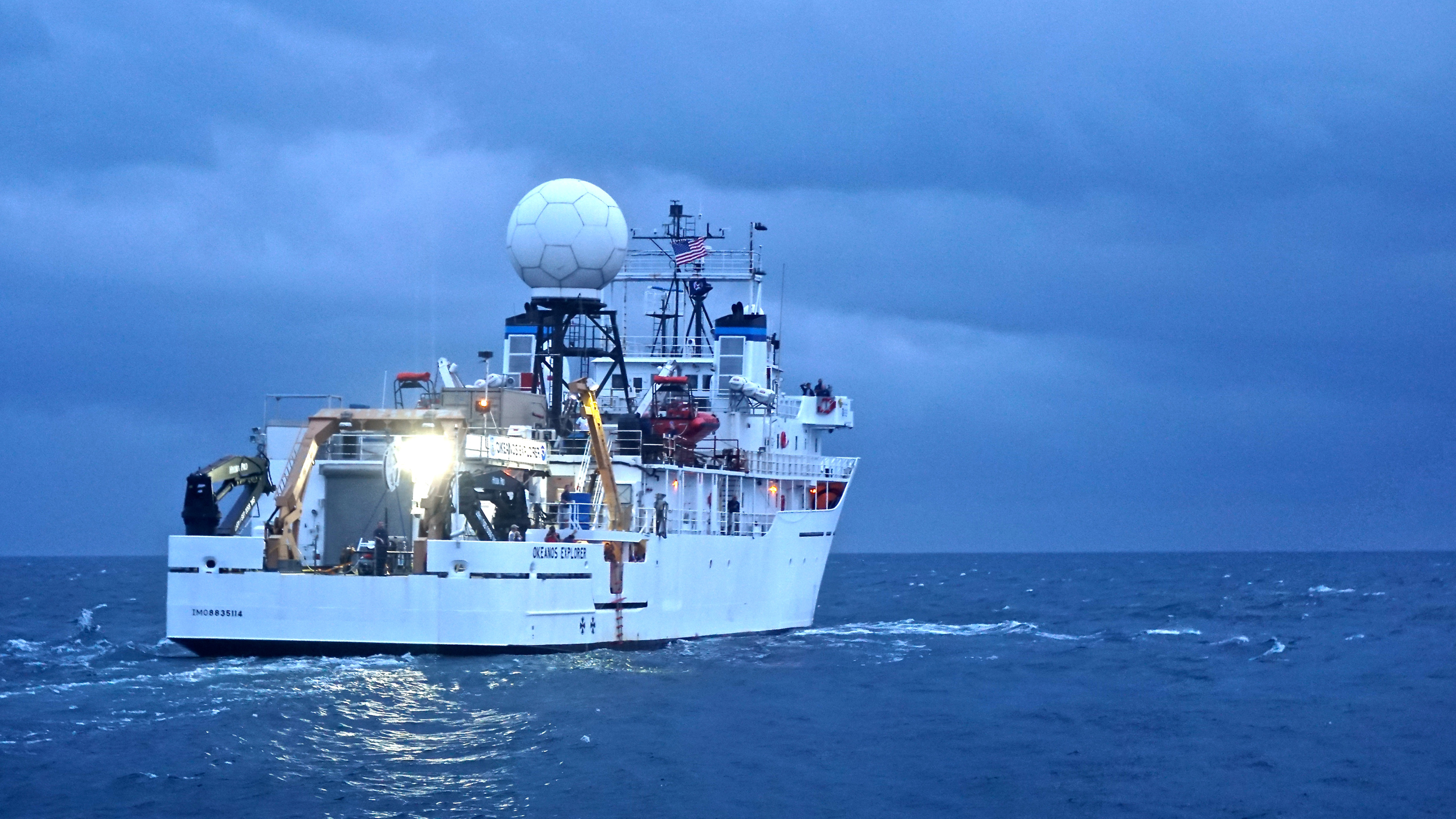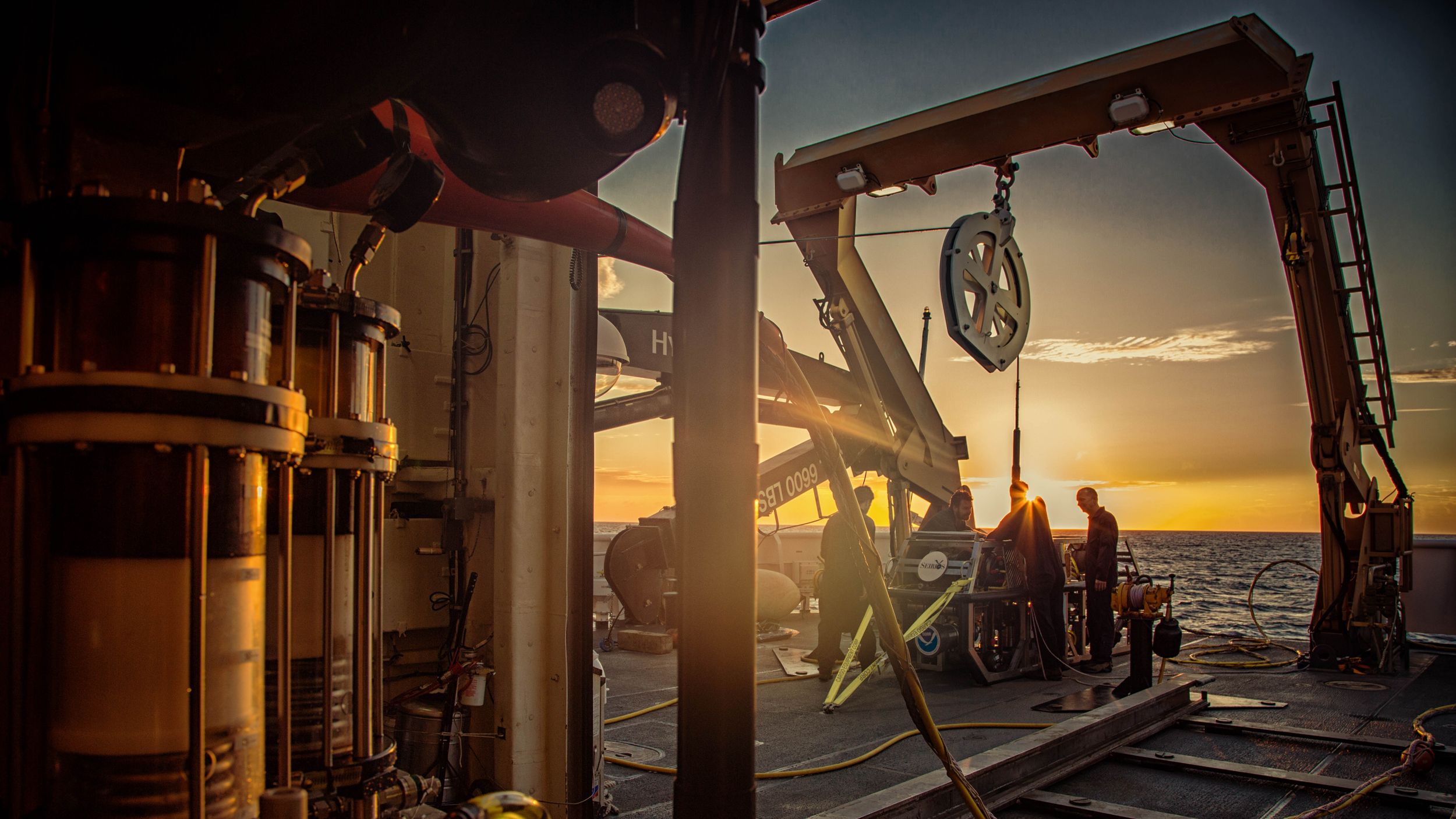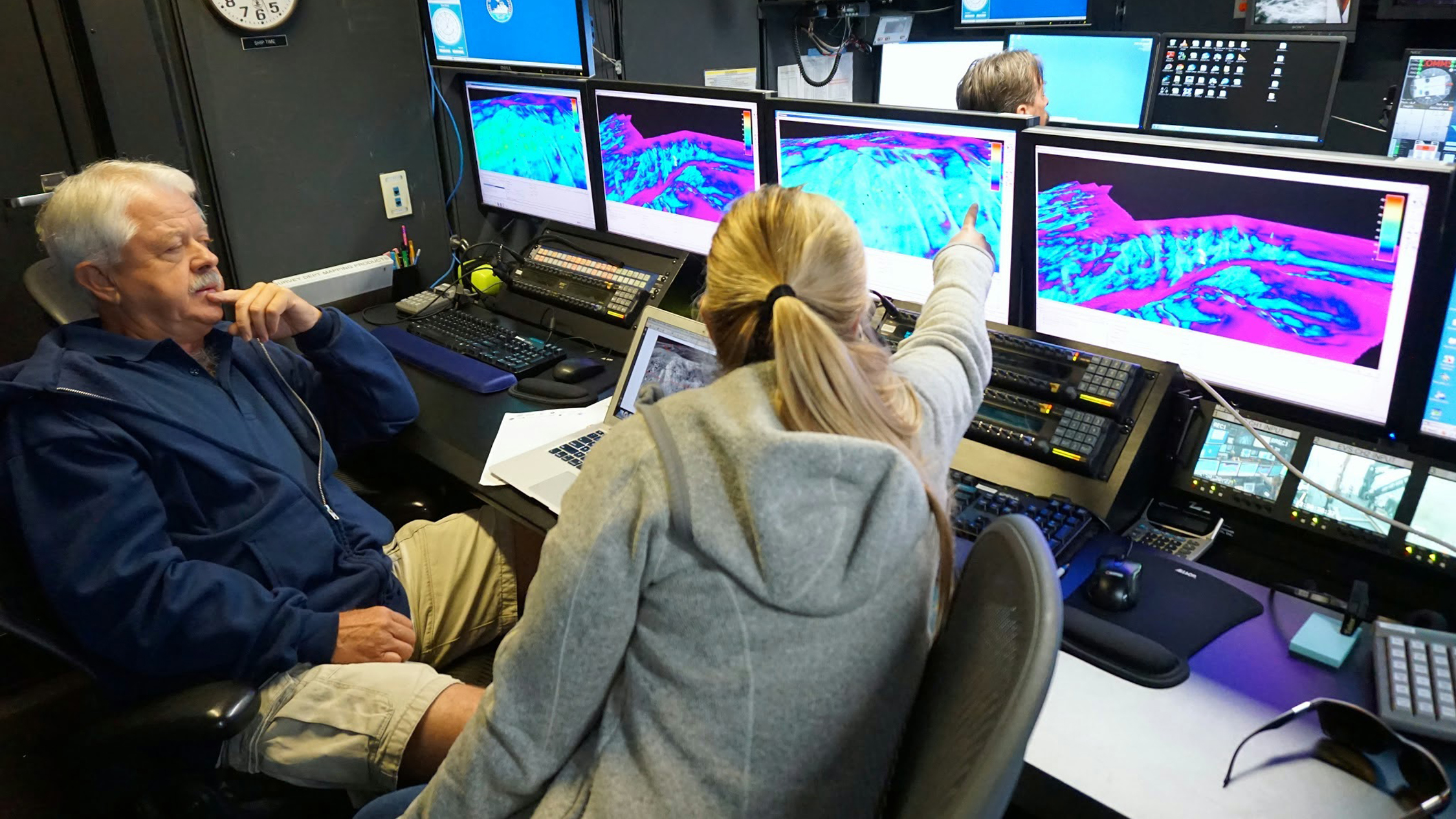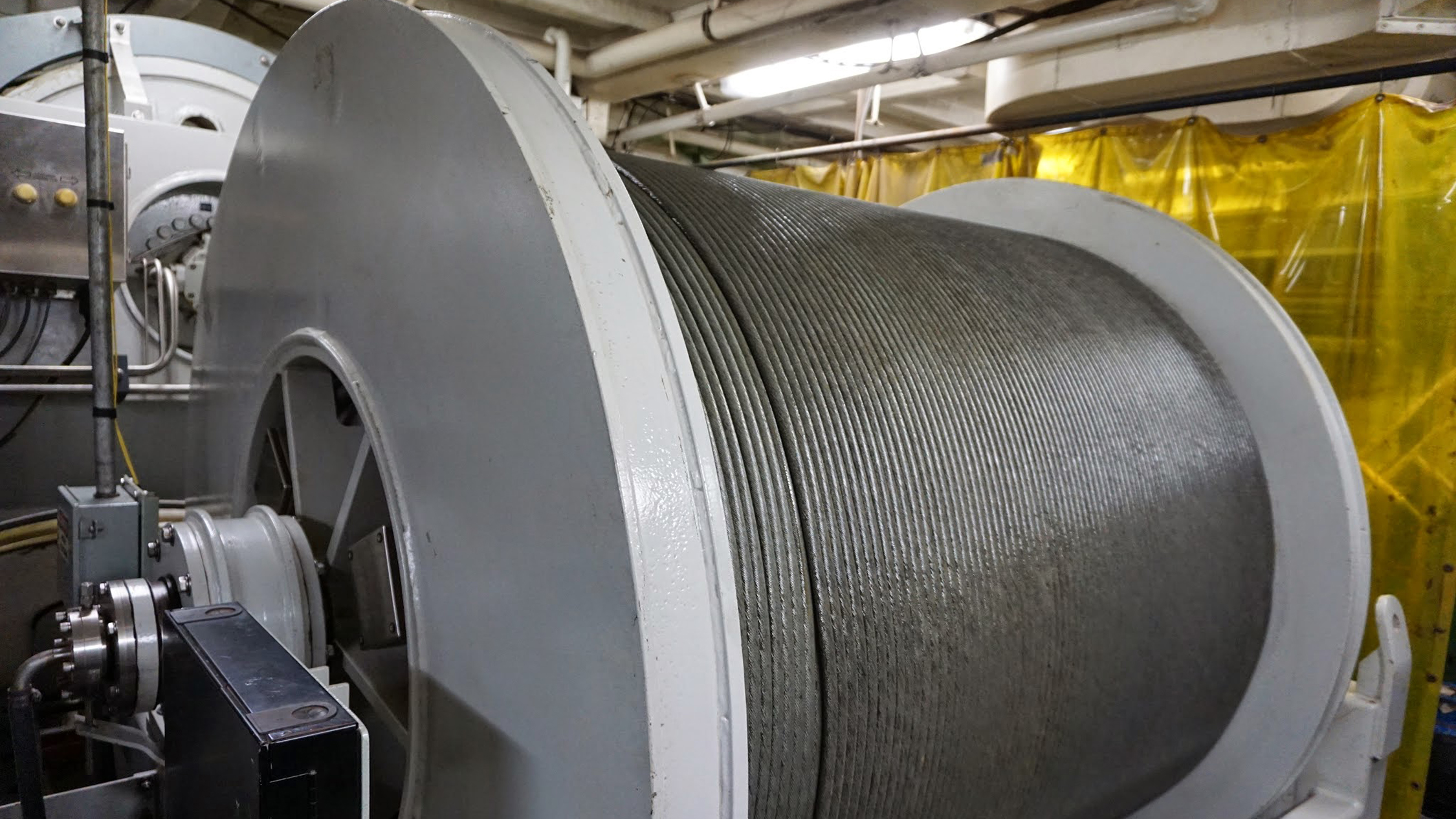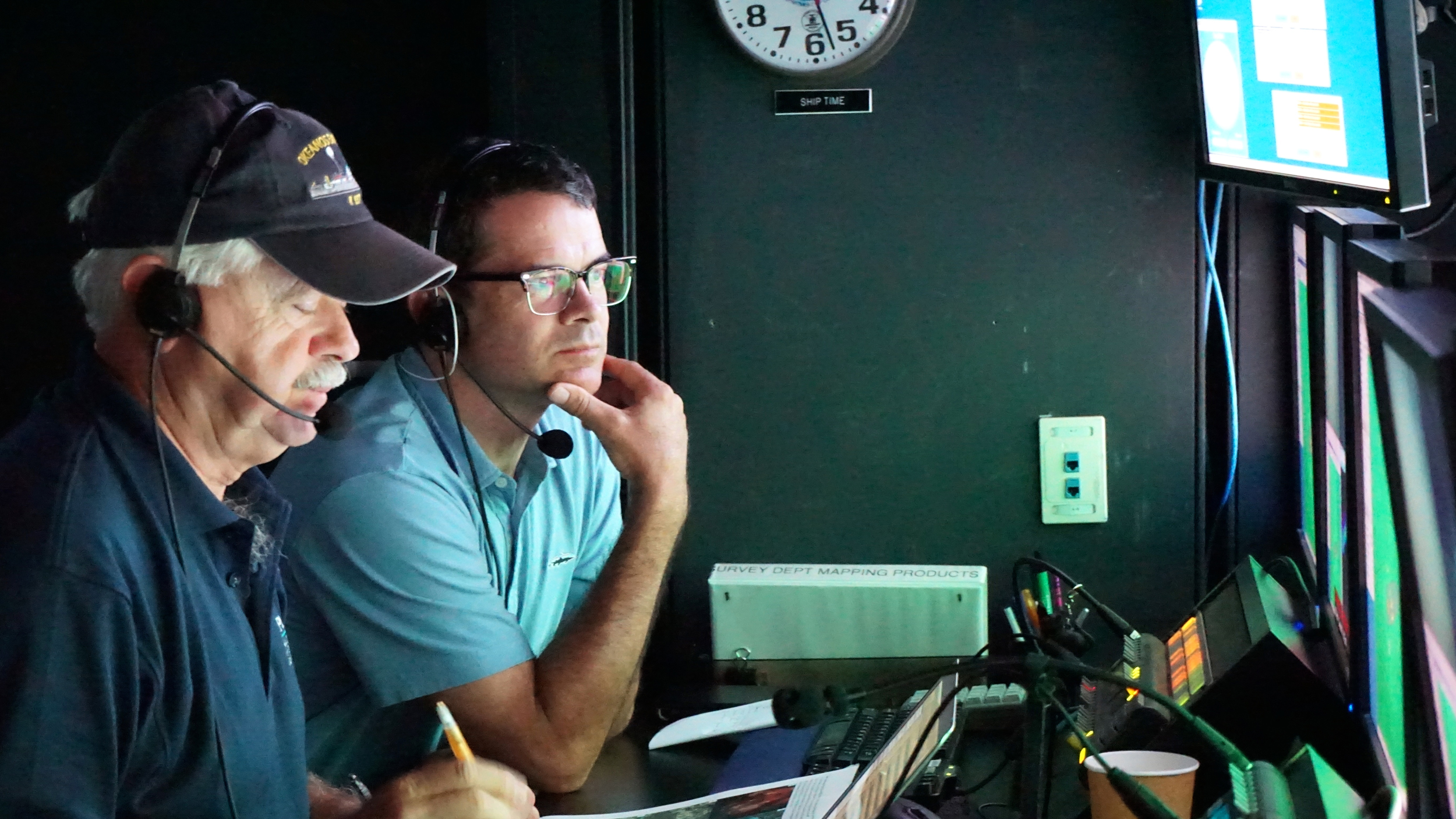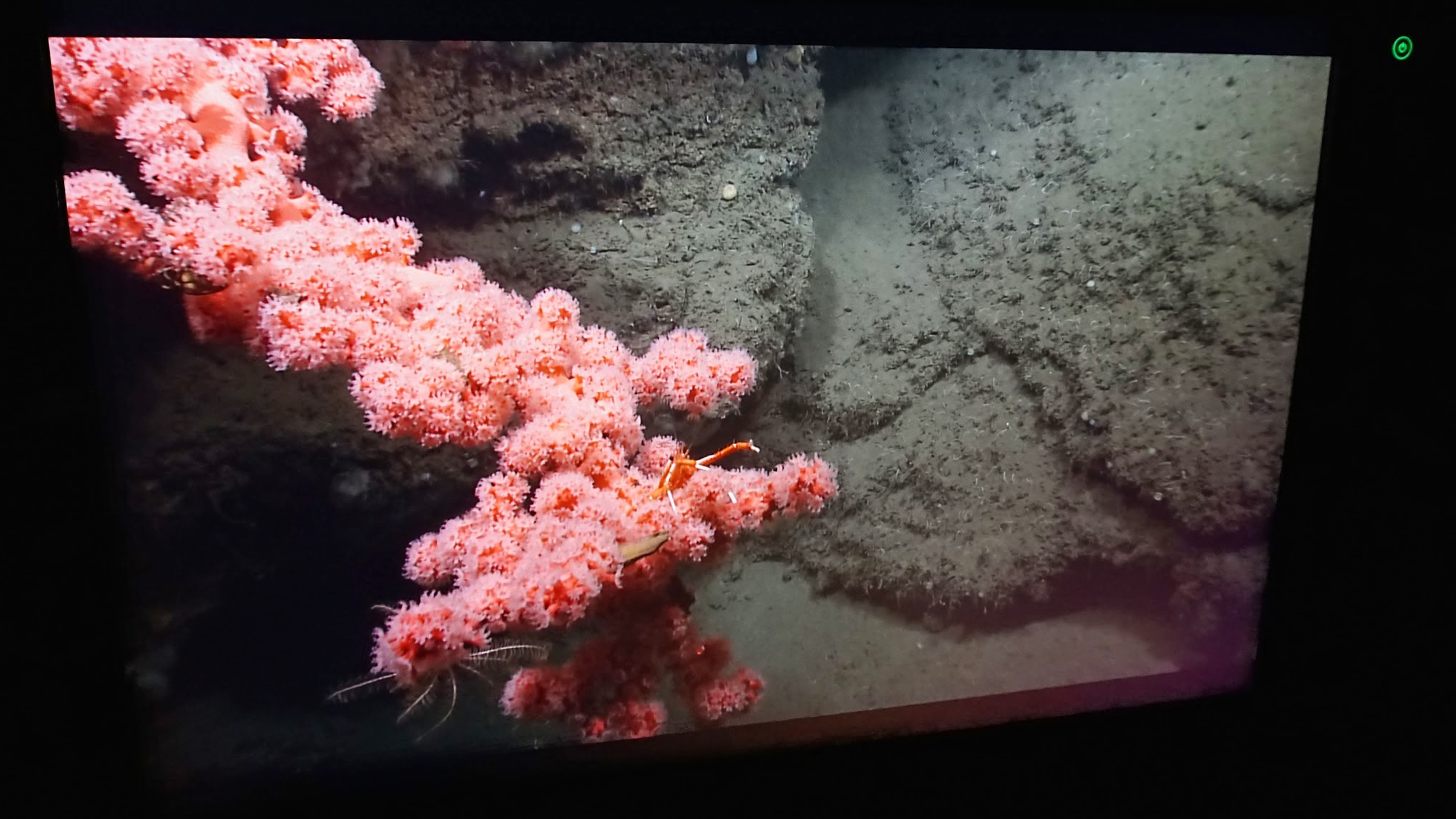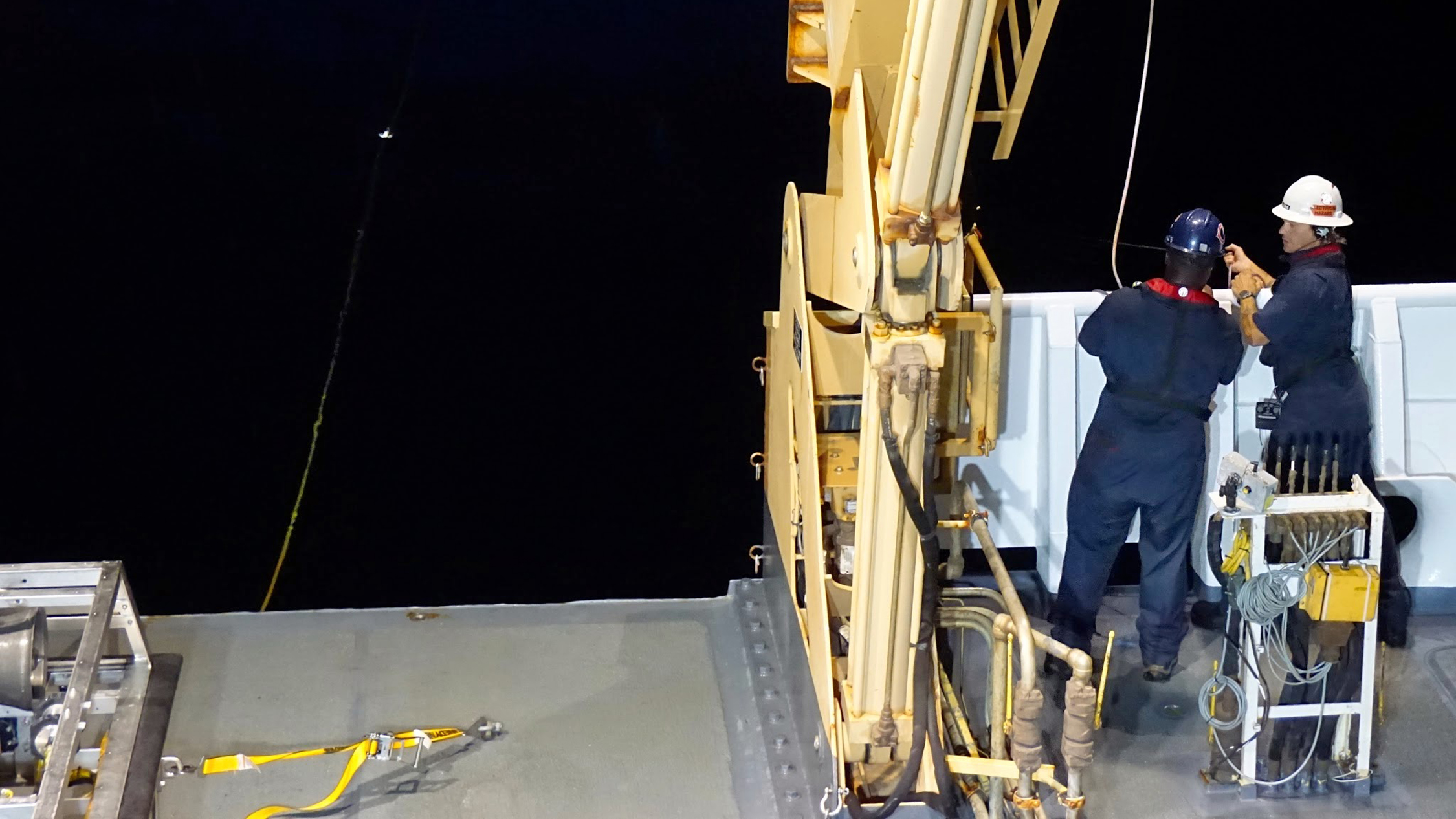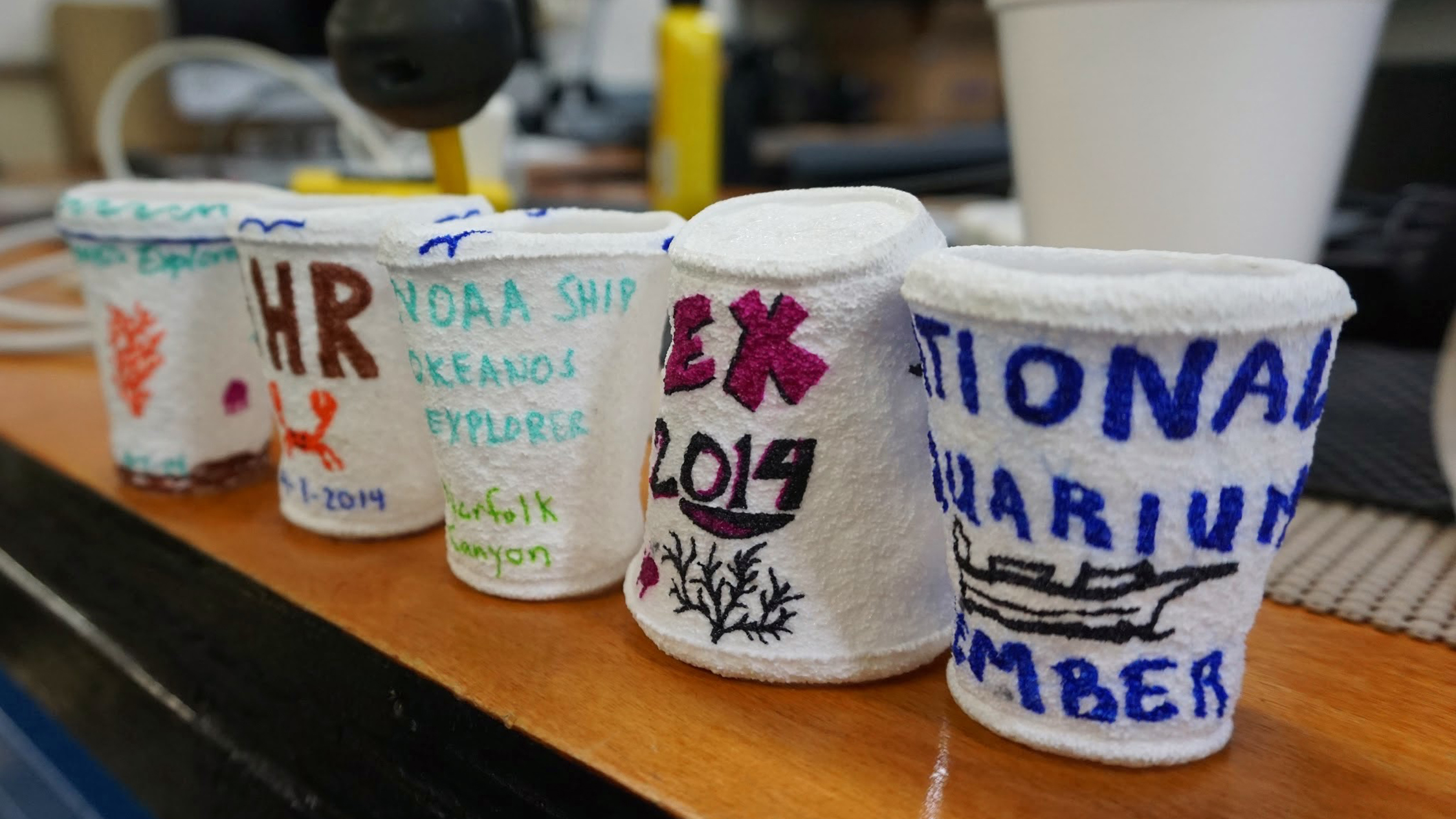Exploring America's Ocean Canyons
Officials in the mid-Atlantic region are considering important and much-needed protection for some 39,000 square miles of U.S. territory, an area larger than Delaware, Maryland, and New Jersey combined. But it’s not a place that you or I have ever visited. It’s part of the country’s ocean realm stretching 200 miles from shore, beyond our shallow coastal waters. Fortunately, the deep-sea explorations of the National Oceanic and Atmospheric Administration vessel Okeanos Explorer and its unmanned submersible are bringing parts of that vast, largely unknown area into spectacular, close-up view.
Aaron Kornbluth, a staff member of The Pew Charitable Trusts, recently had a chance to participate in an Okeanos expedition to Norfolk Canyon, about 75 miles east of Virginia Beach. Aaron got a firsthand look at the challenges of studying the ocean bottom and the rewards of seeing what lives there.
Aaron told me about the skill the crew needs to maneuver its undersea cameras in the pitch-black darkness and crushing pressure of the depths, where strong currents and overhanging cliffs threaten to rip the submersible from its nearly 26,000-foot-long cable. “Imagine sending a $5 million, 9,200-pound remotely operated vehicle down there,” he said. “That would be one nerve-wracking experience, if you ask me.
And yet the ship’s robotic submersible, Deep Discoverer, not only reaches those sites, but it also allows scientists on land to interact with the crew and to observe the dives in real time.
That collaboration came to life during the Norfolk Canyon dive as a deep-sea corals expert from Florida State University and a squid expert from the Smithsonian helped to identify species when they appeared on the video feed. As Deep Discoverer descended from 1,600 to 2,300 feet on the southern slope of the canyon, bright pink Paragorgia (“bubble gum”) coral appeared from the gloom, some of the largest ever observed off the Atlantic Coast, according to experts. Squids dive-bombed the ocean floor, causing plumes of silt and clay to cascade slowly down the steep canyon wall—behavior that a biologist said could be a mating ritual.
Aaron also saw how important these areas are as habitat for other animals, including swordfish, hake, cusk, red crab, and sea stars. In one memorable moment, a giant monkfish ambushed some unsuspecting squids in front of the camera. The video capabilities allow the public to watch as the scientists make fresh discoveries. “My 92-year-old grandmother was able to watch a live stream of the dive from her home in Vermont,” Aaron told me. “This is the new age of ocean exploration.
The Okeanos and other deep-sea exploration vessels are expanding our knowledge of these poorly understood, fragile, and unique environments. Okeanos expeditions this year have also provided live images from the floor of the Gulf of Mexico and the canyons along the edges of the continental shelf of the Atlantic Coast, revealing a bizarre “asphalt volcano” and previously unknown gardens of deep-sea corals. What starts out as video footage of the ocean bottom eventually winds up in species databases and spatial models of seafloor habitats that are being used to inform ocean management.
Which brings us back to that conservation decision I mentioned earlier: The Mid-Atlantic Fishery Management Council is using the information from the explorations as it considers protecting a vast swath of the seafloor and the deep-sea coral communities dwelling there. These areas constitute critical habitat for numerous prized species, including shrimp, squids, monkfish, hake, tilefish, and flounder. They also contribute to marine biodiversity and to the overall integrity of ocean ecosystems. The council should adopt the strongest possible protections for this threatened resource.
Given their remoteness, ocean canyons such as Norfolk may seem to be immune to human influence, but there’s growing evidence of pollution and the impacts of deep-sea fishing, especially from bottom trawls. We have observed only a small fraction of America’s underwater landscape. Let’s protect it while we continue to explore.
